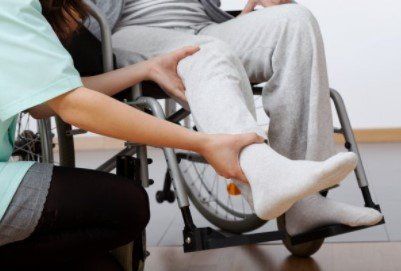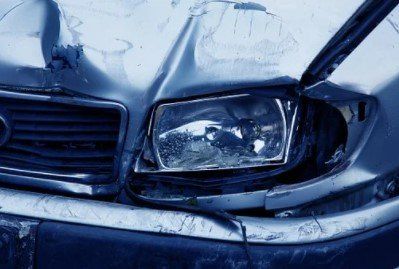What Happens When You Are in a Car Accident
What Happens When You Are in a Car Accident
By Dr. Anderson | November 21, 2021
Let’s face it: car accidents are a scary reality of the world we live in today. There are more than 17,000 accidents a day in the United States, and thousands of people are killed each year as a result.
You may have a vague idea of what happens during an accident: the harm, the risk, etc. What many people are ignorant about is after the accident: what happens then? When do I call insurance? Do I need to get information from the other driver? Who will determine who is at fault and responsible to pay for all this? Is my insurance coverage good enough?
In this post, we are going to walk through a car crash situation, detailing what occurs during and after the accident: both what physically happens and what logistically happens.

MEET MOLLY: A CAR ACCIDENT SURVIVOR
Throughout this article we are going to be analyzing the actions of Molly, a theoretical car crash survivor (in reality, this isn’t “theoretical” at all – all of what we discuss are common events from crashes).
Molly was driving to work, taking her usual route that she’s comfortable with and with a moderate amount of traffic. She wasn’t paying particularly close attention due to her familiarity with the route. While approaching an intersection with a green light, Molly looked up to the sky and some balloons floating away when – BAM! A car going perpendicular to Molly ran a red light and crashed into her.
Thankfully, the car accident was not too severe and it wasn’t necessarily Molly’s fault. Molly suffered from some mild injuries. She took all the necessary and correct steps directly after the crash and in the weeks following.
WHAT INJURIES CAN HAPPEN?

Any injury from a car accident must be taken seriously – no matter how “minor” or insignificant it may seem. Make sure you call the police and receive medical attention as soon as possible and worry about compensation and filing with your insurance company later.
The Head

Injuries to the head are arguably the most critical and severe. Your body will do everything it can to protect the brain, which is why so many people get concussions after a car accident.
Your head will likely be flung forward (or to the side in the case of a “T-bone” crash like Molly) and into the airbag. The airbag should absorb most of the shock, but it is still very possible for you to hit your head on something hard and potentially develop a concussion.
Other objects that can become dislodged during the accident, such as glass and metal, have the potential to hit your head. Be careful when exiting the vehicle as well, as the car may be deformed (and thus different than what you’re used to), so you have a greater chance of hitting your head on a part of the car.
The Torso
Your seatbelt will engage in a car accident. It is designed to stop you from flinging into the windshield and does a great job of doing so. However, the seatbelt will likely cause other, less severe harm to your body.
Your seatbelt will tighten around your lower abdomen and chest upon impact. It’ll feel compressive and will likely make you feel like the wind was knocked out of you. You will experience some pain and soreness around the areas, and likely some bruising as well.
The Limbs
The arms and legs can easily get caught up and hurt in a car accident. The most common injuries are abrasion to the skin and mild to severe sprains. However, it is still very possible to break an arm or leg during an accident.
It is important to keep your limbs where they should be while driving or riding in a car. For example, don’t put your feet on the dash or put your arm out the window. This will help reduce the probability of serious harm to the limbs during a collision.
The Spine/neck
Considered one of the more “serious” injuries, harm to the spine and/or neck is fairly common in a variety of degrees. The most common is whiplash, which can happen in the smallest of accidents. Other more serious conditions can arise as well, such as pinched nerves in the spine.
All and any of these symptoms from an accident need to be checked out. They can always become something worse than they appear.
AFTER THE ACCIDENT: WHAT HAPPENS?

Call The Police
The first thing you should do after an accident if someone has not already is called the police to report the accident. You do not want to do much until the police arrive, other than getting out of the car if you can safely do so. The police will ask you questions about what occurred and help determine who is at fault and responsible. They will also likely take photos of the vehicles involved.
Until the police arrive on the scene and/or you receive the medical treatment you need, do not worry yourself with car insurance information, phone numbers, or the others involved in the accident (unless they need help).
Thankfully Molly was not seriously harmed in her accident. She exited the car as soon as she saw it was safe to do so and walked to the sidewalk to call and wait for the police.
Seek Medical Attention
Right on par with calling the police, you should receive medical care ASAP after an accident. All the injuries we mentioned before, regardless of their perceived severity, should be checked out by a medical doctor, chiropractor, EMT, etc.
In fact: even if you appear to be completely uninjured, you should still get checked out. Many injuries may be “hiding” and you could not notice them for a few days. Even the common whiplash can develop into something severe. You should primarily seek care for your physical well-being, but also have information on file for if and when you file a claim with your, or another drivers’, insurance.
Though Molly was not seriously injured, she still got checked out by the EMT that arrived on the scene. She sustained just one minor injury, some light bruising from the seatbelt. Thankfully she had no sprains, broken bones, or concussion.
Know Who Else Was Involved In The Accident
So long as you and the other driver or drivers can physically, it is generally a good idea to get the information from everyone else involved. For example, get their phone numbers, auto insurance information, vehicle information, etc. You may also want to take photos of the accident: both of your vehicle and the other driver’s vehicle. Having a record of any property damage will help both you and your car insurance company when you file a claim.
When the police get to the car accident scene, they will take everyone’s information and details on what happened. So it is by no means completely necessary to take down this information, but still a good practice in case you quickly need to convey information to your insurance company.
After the accident, Molly went ahead and got the information from the other driver since she felt safe doing so. She got their phone number, insurance information, and vehicle information. The other driver got the same information from Molly.
Call Your Automobile Insurance Company

Once you are safe and no longer at the car accident scene, you need to call or get in contact with your auto insurance company. You will tell them what happened, giving details on the collision from your point of view. They will also receive information from the police report.
Note: The state of Minnesota is a no-fault state that requires all insurance companies to provide up to $20,000 in medical coverage to all those involved, whether it was their fault or not.
When Molly got home that evening after the car accident, she called her car insurance company. She gave her take on the accident, details of the damage, and more. If she had incurred any medical bills, she would let her insurance company know of those bills.
Get In Touch With A Lawyer
You’ve likely seen personal injury lawyers advertising on TV, boasting a free consultation, or even offering a free case for those harmed in a car accident, regardless of who was at fault or responsible. These attorneys have legal expertise in these practice areas of the law, working with insurance companies and working to get you the best compensation.
Depending on your circumstances and the severity of your crash and property damage, it could be worth clicking that “call us today” button (or even going into a lawyer’s office) for a free consultation call with an attorney at law.
Since Molly (and the other driver) were not severely harmed in the car accident, she did not feel the need to contact an attorney. Had the accident been worse, had she been more severely injured, if she had to pay expensive bills due to poor medical insurance coverage: she would have been in contact with a lawyer that offers free legal advice.
IN CONCLUSION
A car accident can be an overwhelming and disruptive event, regardless if you are at fault or not. Your primary initial concern should be the health of yourself, the other driver or drivers, and any third party involved. You are probably unfamiliar with the specifics of the law, and wondering if you should call your insurance company, a personal injury lawyer, or both.
Here are the “must-dos”: contact the police, seek attention from a healthcare provider**, report the accident, get the other driver’s number and insurance, contact your car insurance to file a claim, and get the phone number of a lawyer if you feel you need one. Each accident is different, so the needs will vary from accident to accident.
**At StoneBridge Chiropractic, we offer free consultations. If you’ve been involved in an auto accident, don’t let any amount of injuries go unattended. Give us a call today for your free consultation.
You want to do your best to avoid car accidents, but if it happens: you want to be safe in a car accident and make sure you receive compensation if deserved. Follow the steps that Molly took after her car accident.
Molly Followed The Correct Steps.

NOT A STONEBRIDGE PATIENT?
We want to invite you to a free consultation! We offer highly personalized, tailored to your needs, and affordable care. Send us a message or call now.
If you are already a StoneBridge Chiropractor patient, would you do us a huge favor and leave an honest review on Google? It really helps us connect with other great patients just like you.
I’m Dr. Anderson — thanks for reading!
Don’t Miss Our Latest News, Free Education, & Special Offers.
Join other subscribers who follow the StoneBridge Chiropractic blog and start getting more from your health.
Don’t Miss Our Latest News, Free Education, & Special Offers.
Join other subscribers who follow the StoneBridge Chiropractic blog and start getting more from your health.